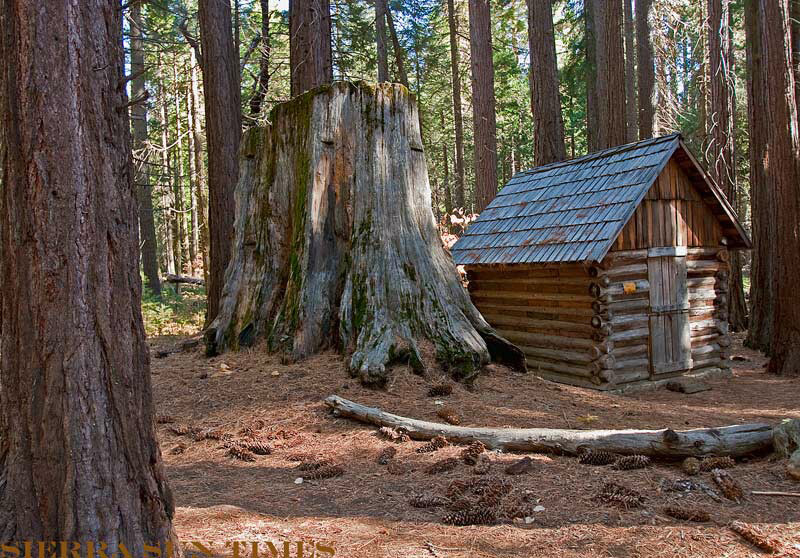
Nelder Grove, Sierra National Forest
June 9, 2016 - By Kate Campbell - The future of national forests in California and the West is being shaped in the first released plans that could have far-reaching implications for how public forestland is used.
To start, the U.S. Forest Service has released draft environmental impact statements and forest plan revisions for Inyo, Sequoia and Sierra national forests, with plans for other federal forests to follow. The release opens a 90-day comment period.
The notice also listed a schedule of public meetings and tribal forums. Agricultural and forest policy experts urged farmers, ranchers and private timberland owners to attend.
"The plan documents will set regulations that will be in existence for the next 15 to 20 years," said Larry Duysen of Sierra Forest Products in Terra Bella. "It's important they're carefully analyzed and written comments submitted before the Aug. 25 deadline."
He said the public meetings will be very important, because they provide an opportunity to learn more about the plans and make oral comments.
What the plans set forth will affect future prospects for grazing, timber harvesting, water production and water quality, Duysen said.
Together, the Inyo, Sequoia and Sierra national forests encompass nearly 4.6 million acres of land—representing about 10 percent of the state's total forestland. The USFS calls the three forests "early adopters" of a 2012 Planning Rule, meaning they're among the first national forests across the country to implement the new regulatory update requirement that applies to all federal forests.
Forest plans have been required since 1976 under the National Forest Management Act, but plans have generally not been updated for decades.
Draft plan documents identify the Forest Service's "preferred alternative" for the Inyo, Sequoia and Sierra forests. The preferred alternative, known as Alternative B, would replace wildland-urban defense and threat zones with a "risk-based wildfire restoration zone and wildfire maintenance zone" to allow for "strategically located fuel reduction treatments along roads, ridgelines and connecting areas with lower fuels to support larger landscape-scale prescribed burning."
Under the heading "Ecological Integrity," the preferred alternative calls for improved habitat for endangered and protected species and old-growth forest areas. It also calls for removal of some large and old trees in areas designated as wildfire-protection zones.
Alternative B emphasizes restoration of sagebrush habitat important to the greater sage grouse in the Inyo National Forest. It calls for continued management of riparian conservation areas and aquatic refuges, for expanding wilderness areas and adding more miles of wild-and-scenic rivers. It also identifies four additional areas—totaling 37,029 acres—for inclusion in the National Wilderness Preservation System.
Kirk Wilbur of the California Cattlemen's Association said his organization has a number of concerns with the draft plans, including "reliance on inadequate science" related to sensitive species such as the Yosemite toad and yellow-legged frog.
"We see those same species listed for protection under the draft plan revisions," Wilbur said, "and that suggests managing for species with incorrect science."
He said California cattlemen worry about increased restrictions on federal land.
"We have seen time and again that when wilderness areas are expanded and wild-and-scenic river miles are added, there's a decrease in areas available for grazing in the national forests," Wilbur said.
The CCA stresses the importance of reviewing the draft forest plans and commenting, because they will have a long-term impact on grazing on federal lands, he said.
"This should be on the radar of all our members using federal forestland," Wilbur said.
Sean Curtis, Modoc County natural resources analyst and county Farm Bureau leader, said the draft plans represent "the most important thing these forest administrations will do in the next 20 years, because everything they do in the future will be tiered off these plans."
That means every timber sale, grazing permit, recreational project and conservation project will come under the forest plans now being revised, he said, adding, "If you're only able to work on one thing, this is it."
At the California Forestry Association, Steve Brink said forests face the prospect of continued "megafires and a massive insect and disease epidemic," worsened by the drought, and noted that as much as two-thirds of the entire USFS budget had to be diverted to fire-suppression costs last year, rather than forest management.
Because of increasing tree mortality, lack of wood processing infrastructure, closure of biomass plants and inadequate federal budgets, Brink said, conditions for large fires "the likes of which we've never seen before" are building—but he said these conditions aren't addressed directly in the draft forest plan revisions currently under consideration.
The California Farm Bureau Federation and county Farm Bureaus recommend farmers and ranchers in forest counties pay close attention to a process that now affects three federal forests, but will eventually impact all federal forests in California and the West.
Curtis said county governments in counties that include federal forestland also need to be actively involved in the forest plan revisions, because counties have added interest and administrative weight when it comes to how plans will be finalized.
"Congress conferred additional status to local governments because of the enormous impact federal forests have on local communities," he said.
(Kate Campbell is an assistant editor of Ag Alert. She may be contacted at kcampbell@cfbf.com.)
Reprinted with permission: California Farm Bureau Federation








